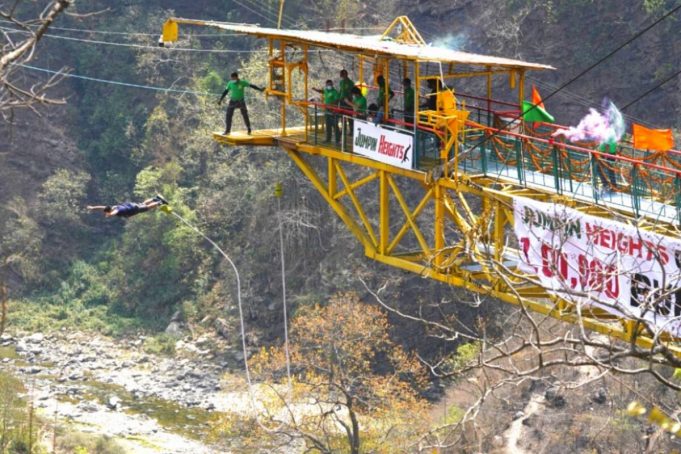During pandemic times when the tourism industry is bearing most of the burnt, Jumpin Heights has completed 100,000 jumps in Rishikesh where it started as a home-grown adventure tourism brand in 2010. With this landmark, Jumping Heights, owned and run by ex-army officer has achieved a global record for India and is playing a key role in making the pilgrim city of Rishikesh the ‘adventure capital of India.’
Rahul Nigam, Managing Director & Founder, Jumpin Heights, speaking on the occasion of Jumpin Heights completing 1 lakh jumps congratulated India to show the world that ‘India’s got guts’. Sharing that they ventured into adventure tourism for the youth, Nigam in a statement said that the brand had been consistent with its safety standards that are at par with global standards.
“Since the inception of our operations, safety has always been our priority and continues to be even amidst the pandemic. However, we make sure there are no compromises with the thrill of the experience.”, he added.
Jumpin Heights claims to be the only Bungy facility to have received certification by the Ministry of Tourism, Govt of India for Bungy operations in the country. After Rishikesh, Jumpin Heights began operations in Goa, from the 28th of August, 2019. Set up amidst the stunning landscape of Rishikesh, this is India’s first and highest Bungy jumping platform (83 meters). A Cantilever platform is built over an iron cliff overlooking a rocky river HYUL, a tributary of River Ganga from where travellers can take a plunge with rubber cords tied to their ankle and feel the adrenaline rush.
Tourism in Rishikesh bounced back after the Covid-19 pandemic restrictions were lifted late last year and cases declined steadily. On weekends, hostels and hotels are nearly full and despite the fact that there are no foreign tourists, these places are not feeling the pinch. However, at present considering the exponential rise in cases, the Uttarakhand government made it compulsory for travellers from the highest number of daily Covid-19 cases to carry a negative RT-PCR report not older than 72 hours to visit the Himalayan state.









